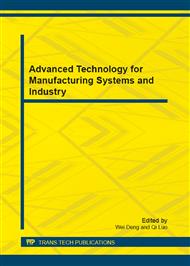[1]
Alshamsi, A. M. Efficiency of the use of set-retarding superplasticizers in hot climates. Arab Gulf. J. Sci. Res. 12(1994) 433–448.
Google Scholar
[2]
Akin, Altun I., & Yesim, Sert. Utilization of weathered phosphogysum as set retarder in Portland cement. Cem. Concr. Res. 34(2004) 677-680.
DOI: 10.1016/j.cemconres.2003.10.017
Google Scholar
[3]
Tzouvalas, G., Dermatas, N., & Tsimas, S. Alternative calcium sulfate-bearing materials as cement retarders Part I. Anhydrite. Cem. Concr. Res. 34(2004) 2113-2118.
DOI: 10.1016/j.cemconres.2004.03.020
Google Scholar
[4]
Ozkul H., Saglam A R., Parlak N. The utilization of beet molasses as a retarding and water-reducing admixture for concrete . Cem. Concr. Res. 35(2005)874-882.
DOI: 10.1016/j.cemconres.2004.04.036
Google Scholar
[5]
Chandara C., Azizi K., Azizli M., et al. Use of waste gypsum to replace natural gypsum as set retarders in portland cement. Waste Manage. 29(2009)1675-1679.
DOI: 10.1016/j.wasman.2008.11.014
Google Scholar
[6]
Grierson L.H., Knight J.C., Maharaj R. The role of calcium ions and lignosulphonate plasticiser in the hydration of cement. Cem. Concr. Res. 35(2005) 631-636.
DOI: 10.1016/j.cemconres.2004.05.048
Google Scholar
[7]
Nadif A., Hunkeler D., Käuper P. Sulfur-free lignins from alkaline pulping tested in mortar for use as mortar additives. Bioresour. Technol. 84 (2002)49-55.
DOI: 10.1016/s0960-8524(02)00020-2
Google Scholar
[8]
Bensted J., Callaghan I C., Lepre A. Comparative study of the efficiency of various borate compounds as set-retarders of class Goil well cement. Cem. Concr. Res. 21(1991)663-668.
DOI: 10.1016/0008-8846(91)90117-z
Google Scholar
[9]
Cheung J., Jeknavorian A., Roberts L. , Silva D. Impact of admixtures on the hydration kinetics of Portland cement. Cem. Concr. Res. 41(2011)1289-1309.
DOI: 10.1016/j.cemconres.2011.03.005
Google Scholar
[10]
Vinatier C., Magne, D., Weiss P., C. Trojani, et al. A silanized hydroxypropyl methylcellulose hydrogel for the three-dimensional culture ofchondrocytes. Biomaterials . 26(2005)6643–6651.
DOI: 10.1016/j.biomaterials.2005.04.057
Google Scholar
[11]
Vieira M.C., Klemmb D., Einfeldt L., Albrecht G. Dispersing agents for cement based on modified polysaccharides. Cem. Concr. Res. 35(2005)883-890.
DOI: 10.1016/j.cemconres.2004.09.022
Google Scholar
[12]
Zhang D. -F., Ju B. -Z., Zhang S. -F., Yang J. -Z. The study on the synthesis and action mechanism of starch succinate half ester as water-reducing agent with super retarding performance. Carbohydr. Polym. 71(2008)80–84.
DOI: 10.1016/j.carbpol.2007.05.020
Google Scholar
[13]
Vieira, M. C., Klemm, D., Einfeldt, L. Dispersing agents for cement based on modified polysaccharides. Cem. Concr. Res. 35(2005)883–890.
DOI: 10.1016/j.cemconres.2004.09.022
Google Scholar
[14]
Cheng F., Hou Gui-li. Synthesis and properties of sulfonated starch as superplasticizer. Fine Chem. 23(2006)711–716.
Google Scholar


